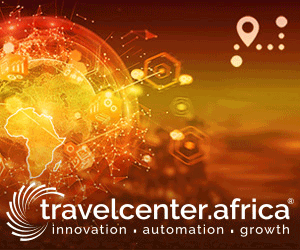 Liberia’s Tourism Revival: New Authority Sparks Hope Amid Infrastructure and Investment Challenges
Liberia’s Tourism Revival: New Authority Sparks Hope Amid Infrastructure and Investment Challenges
On a warm afternoon in Voka Mission, near Paynesville, Liberia’s newly appointed presidential envoy for tourism, Chris Onanuga, shares a moment with local youth playing football and enjoying the shade of sprawling trees. To many, it’s a simple scene of community leisure, but for Onanuga, it symbolizes a profound shift: Liberia is ready to shed its past image of conflict and emerge as a vibrant destination where nature, culture, and adventure converge.
With two-thirds of Liberia’s population under 30 and grappling with limited job prospects, Onanuga sees tourism as a powerful engine for employment and economic renewal. “Tourism is more than business. It’s proof that Liberia can offer beauty, not just resilience. One flight, one farm, one fried breadfruit at a time,” he says, emphasizing a vision to rebrand Liberia as West Africa’s next adventure frontier.
Boasting 560 kilometers of largely untouched sandy coastline, warm Atlantic waters, and some of the world’s most impressive surfing waves, Liberia’s natural assets are compelling. Sapo National Park offers rare glimpses into biodiverse rainforests, home to endangered species, while the country’s 16 tribes contribute a rich tapestry of languages, dances, and culinary traditions. This blend of nature and culture forms the backbone of Liberia’s tourism promise.
Despite these assets, Liberia’s tourism journey has been uneven. A decade ago, under President Ellen Johnson Sirleaf, tourism was declared a priority sector, with a 2016 national export strategy outlining a phased roadmap—from youth skills development to establishing a national tourism authority. However, many initiatives, including a hospitality school in Robertsport and community tourism pilots, stalled during the subsequent administration.
That changed in 2024 when President Joseph Boakai, Sirleaf’s former vice president, took office and reignited the tourism agenda. In June 2025, the government launched the Liberia National Tourism Authority (LNTA) as an independent entity, separate from the Ministry of Information. Onanuga is now leading the Authority through a critical 90-day period to become fully operational—setting up offices, recruiting staff, and crafting Liberia’s first standalone tourism strategy. The government aims to boost economic growth and increase tourism revenue to \$1 billion, targeting a 10 percent rise in visitor numbers by developing 15 eco-tourism sites, including Nimba Reserve, Sapo National Park, and Robertsport.
Onanuga draws inspiration from Ghana, Liberia’s neighbor, which generated \$4.8 billion in tourism revenue in 2024, fueled by 1.3 million arrivals. Ghana’s success partly stems from engaging Africa’s diaspora, many of whom trace their roots back to the Americas through the transatlantic slave trade. Liberia hopes to tap into similar connections, leveraging its historical ties to the United States and Caribbean nations founded by freed slaves.
“We’re not just selling destinations. We’re selling Liberia’s cuisine, heritage, and identity,” Onanuga explains. “From Barbadian breadfruit to Nigerian spices, our food tells our story. And our diaspora is already investing—in farms, homes, and futures.”
To facilitate international arrivals, Liberia has introduced an electronic visa system and is upgrading airport infrastructure to modernize facilities and expand capacity. Improving access to key sites like Sapo National Park is a priority, though public timelines for road and transport projects remain pending. Meanwhile, the Tourism Authority is working on legal reforms to regulate the sector, including enforcement and accountability mechanisms, laying the groundwork for future promotional campaigns targeting both domestic and global audiences. Partnerships with content creators, bloggers, and influencers are seen as vital to building Liberia’s tourism brand.
Conservation efforts are also gaining momentum. The Second Chance Chimpanzee Rescue Liberia, in collaboration with the Tourism Authority and the National Public Health Institute, is developing a visitor program focused on chimpanzee welfare and education. Plans include a viewing platform and awareness sessions aimed at curbing the illegal bushmeat trade, highlighting how conservation and tourism can align.
Yet, challenges loom large. Critics caution that without solid infrastructure, trained personnel, and a clear strategic roadmap, the Tourism Authority risks becoming another shelved initiative. Togar Gayewea McIntosh, former Liberian foreign minister and ex-vice president of ECOWAS, stresses that tourists “don’t walk on policy—they walk on roads, fly into airstrips, eat in hotels, and dance with our people.” He argues that the current approach has reversed priorities, setting up the Authority before fully defining its mandate or building the necessary infrastructure and community programs.
McIntosh recalls the original plan under the Sirleaf administration: identify tourism sites, build roads and hotels, train guides, and integrate youth before establishing the Authority to coordinate efforts. “Tourism activates entire chains of enterprise,” he says, “but you need a five-year plan, trained personnel, and a clear roadmap—not just one car, one office, and a press release.”
Onanuga acknowledges these concerns but insists that tourism must start somewhere. “You don’t wait for perfection before beginning. We’re building the structure—getting offices, hiring technicians, securing transport, training people. It’s about sensitization, orientation, capacity-building.” He frames this phase as foundational, focusing not only on branding but also on teaching Liberians to preserve culture, improve hospitality, protect biodiversity, and present Liberia authentically to the world.
He emphasizes a dual focus on immediate domestic engagement and long-term planning, asking, “What kind of tourism are we running? Ecotourism? Culinary tourism? Cultural heritage? Gastronomy encompasses our food, dances, beliefs. That’s where our identity lives.”
However, Liberia’s tourism ambitions face external headwinds. The closure of the U.S. Agency for International Development (USAID) under the Trump administration cut \$300 million in projects and eliminated hundreds of jobs, including those of Americans and Liberians who supported local tourism businesses. Rudolph Antoune, co-owner of Libassa Ecolodge, Liberia’s leading eco-lodge near Monrovia, notes the economic ripple effect: “USAID staff lived here. They bought food, paid rent, hired drivers. That money used to circulate. Now it’s vanished.”
Founded in 2012 by Antoune and his French wife, Libassa Ecolodge offers 20 private huts, natural pools, and guided nature experiences, with nightly rates starting at \$125. A 2022 USAID grant helped expand their facilities and open a sister property, Wackolla Eco-Lodge, providing jobs for over 50 Liberians. Antoune urges Liberians to support local tourism year-round to sustain these businesses through downturns.
In Robertsport, a surf town on Liberia’s western coast, lifelong resident Philip Banini runs a modest guesthouse catering to surfers and eco-tourists. A pioneer of Liberia’s surf community, Banini highlights the potential of surf tourism but laments the poor road conditions—a three-hour drive from Monrovia riddled with potholes and unpaved stretches. “If the government would invest in roads and support surf tourism, Robertsport could thrive,” he says. “Surfing brings people from all over the world. We just need the support.”
For Banini, tourism’s impact is tangible: “When tourists come, the whole town eats. When they don’t, we all feel it.”
Sapo National Park, home to the largest remaining stretch of the Upper Guinean Forest, is another cornerstone of Liberia’s tourism potential. This biodiversity hotspot faces threats from logging, mining, and poverty-driven deforestation. Officials see tourism as a way to provide alternative livelihoods, reducing pressure on endangered wildlife and forests. Yet, community-based ecotourism efforts have struggled, especially after setbacks during the COVID-19 pandemic.
Conservation biologist Annika Hillars stresses that success requires local ownership: “This isn’t about parachuting in foreign tourists and calling it success. It has to be built by Liberians, for Liberians. Otherwise, it’s just another paper promise.” The challenge is balancing preservation with the survival needs of communities living around the park.
Despite funding cuts, Onanuga remains resolute. “With or without donor funding, we must exist. Tourism is not a government-only venture. It’s a collective movement involving private citizens, local communities, and the diaspora.”
He believes the difference now is action, not talk. “We’ve been discussing tourism for decades. Now we have an Authority. We’ve moved from theory to practice.” Yet, he cautions that progress requires strong regulations on mining, logging, and farming to ensure tourism coexists with conservation and industry—if there is political will.
Liberia’s tourism sector stands at a crossroads. With abundant natural beauty, rich culture, and a youthful population eager for opportunity, the foundations are being laid for a new chapter. But the road ahead demands strategic investment, infrastructure development, and inclusive partnerships to transform potential into sustainable growth that benefits all Liberians.
